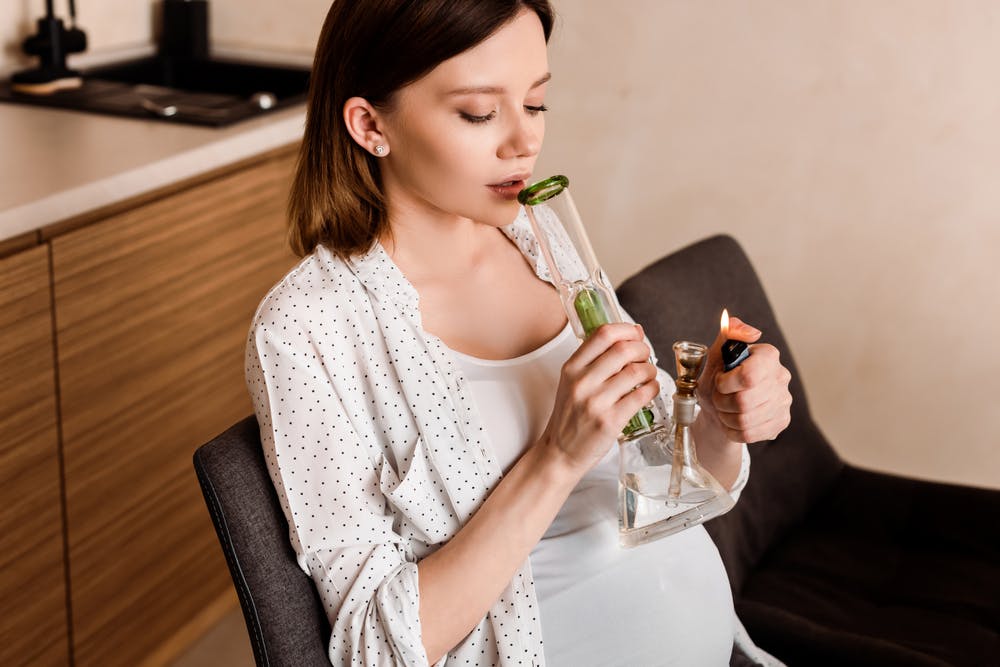The number of pregnant women who report using recreational or medical marijuana has grown steadily for the past 20 years, according to research published in JAMA Network. The combination of cannabis and pregnancy is associated with low birth weights as well as delays in childhood development. Yet, nearly 1 in 4 pregnant and nonpregnant women believe frequent cannabis use poses little to no risk to maternal or fetal health, reports research from the American Journal of Obstetrics and Gynecology.
As the legalization of medical and recreational cannabis use spreads across the United States, South America, and Europe, further research is needed to better understand its potential to affect maternal and fetal health. In the meantime, clinicians may look to "Marijuana Use During Pregnancy and Lactation," which provides updated guidance from the American College of Obstetricians and Gynecologists (ACOG) on educating and counseling patients about cannabis and pregnancy.
Prevalence of Marijuana Use During Pregnancy
Estimates of marijuana use during pregnancy vary widely, driven in part by users' reluctance to disclose the habit to healthcare providers and statisticians. Self-reported rates range from 2 to 5 percent in most studies, but can reach up to 28 percent among young, urban, socioeconomically disadvantaged women, notes the most recent ACOG committee opinion.
Notably, between 34 and 60 percent of marijuana users continue use during pregnancy, largely due to the mistaken belief that cannabis is relatively harmless to their health and their pregnancies. Data analysis from eight states participating in the 2017 Pregnancy Risk Assessment Monitoring System notes that 91 percent of pregnant users smoke marijuana, with edibles trailing as a distant second. Cannabis use appears highest in the first trimester and then tapers off in later pregnancy, finds a 2019 systematic review of recreational marijuana use in BJOG.
So far, 19 states and the District of Columbia have legalized recreational cannabis. Decriminalization has not spiked usage rates among pregnant women, reports a 2021 cross-sectional study of more than 73,000 women in JAMA Network Open. However, the paper finds significantly higher usage before conception and after delivery in states with lawful recreational use.
The European Society for Human Reproduction and Embryology (ESHRE), meanwhile, examined the connection between soft drugs (such as hashish, sedatives, mescaline, and cannabis) and pregnancy loss in women with recurrent pregnancy loss. Although no link was found, ESHRE advises patients to abstain from cannabis and other soft drugs during pregnancy.
Research on Cannabis and Pregnancy
Research on cannabis during pregnancy is constrained by confounding factors that make firm conclusions about its health risks elusive. For example, marijuana-exposed women are more vulnerable to intimate partner violence, an additional risk factor for adverse pregnancy outcomes. A recent National Birth Defects Prevention Study further notes that pregnant marijuana users are more likely to be underweight and less likely to take folic acid supplements, as reported by ACOG. Cannabis users are also more likely to partake in alcohol, illicit drugs and tobacco than nonusers.
The Centers for Disease Control and Prevention (CDC) notes that the chemicals in marijuana — particularly tetrahydrocannabinol (THC) — are known to pass to the fetus during pregnancy. Research in an animal model placed THC concentration in fetal blood samples at about a tenth of maternal levels, which increased with repeated exposure.
In humans, limited data published in the New England Journal of Medicine suggests THC appears in breast milk. A meta-analysis and systematic review of the available research finds no link between cannabis during pregnancy and birth defects or perinatal mortality, notes ACOG, although the risk of stillbirth may be slightly higher. Most reports have found no association between usage and preterm birth.
The relationship between cannabis use during pregnancy and low birth weight is the subject of ongoing investigation. A 2016 systematic review and meta-analysis in Obstetrics & Gynecology reports that marijuana use alone is not associated with low birth weight when confounding factors are taken into account. However, after adjusting for tobacco use, a retrospective cohort study that was not included in the meta-analysis reveals a modestly higher risk of underweight birth and neonatal ICU admission among babies born to women using cannabis.
As for developmental effects, children with prenatal cannabis exposure may perform worse on tests involving hand-eye coordination, visual problem-solving and visual analysis. They may also experience a decreased attention span and behavioral problems, ACOG adds. In utero exposure is also an independent predictor of marijuana use by age 14.
Education and Shared Decision-making
In practice, ACOG's latest guidance on cannabis and pregnancy advises OB/GYNs to inquire about usage as part of a broader conversation about drug and alcohol consumption and maternal and fetal health.
As many patients may consider cannabis harmless, clinicians may begin by explaining there is no safe level of use during pregnancy. Candor may be helpful when describing what is known about low birth weight, stillbirth and childhood developmental delays — as well as how little is known about the overall effect of marijuana use during pregnancy. Similarly, it may be wise to suggest that postpartum patients give up cannabis during breastfeeding and recovery, given the lack of good data on its effects.
In opening a dialogue with patients, clinicians may have to navigate conversations in which patients withhold information due to perceived legal concerns. Patients who are forthcoming about their marijuana use may be educated about its effects and engaged in a shared decision-making conversation about quitting or finding alternatives. Because CDC data suggests that pregnant users largely rely on marijuana to relieve anxiety, pain, vomiting and nausea, consider encouraging pregnant users to switch to alternative therapies where more robust, pregnancy-specific safety data is available.
Until science catches up with the popularity of cannabis, OB/GYNs play a crucial role in educating and counseling pregnant patients about their health and the well-being of their pregnancies.


